A sexually dimorphic pre-stressed translational signature in CA3 pyramidal neurons of BDNF Val66Met mice
- PMID: 28993643
- PMCID: PMC5634406
- DOI: 10.1038/s41467-017-01014-4
A sexually dimorphic pre-stressed translational signature in CA3 pyramidal neurons of BDNF Val66Met mice
Abstract
Males and females use distinct brain circuits to cope with similar challenges. Using RNA sequencing of ribosome-bound mRNA from hippocampal CA3 neurons, we found remarkable sex differences and discovered that female mice displayed greater gene expression activation after acute stress than males. Stress-sensitive BDNF Val66Met mice of both sexes show a pre-stressed translational phenotype in which the same genes that are activated without applied stress are also induced in wild-type mice by an acute stressor. Behaviourally, only heterozygous BDNF Val66Met females exhibit spatial memory impairment, regardless of acute stress. Interestingly, this effect is not observed in ovariectomized heterozygous BDNF Val66Met females, suggesting that circulating ovarian hormones induce cognitive impairment in Met carriers. Cognitive deficits are not observed in males of either genotype. Thus, in a brain region not normally associated with sex differences, this work sheds light on ways that genes, environment and sex interact to affect the transcriptome's response to a stressor.Animals' response to acute stress is known to be influenced by sex and genetics. Here the authors performed RNA-seq on actively translated mRNAs in hippocampal CA3 neurons in mice, and document the effects of sex and genotype (i.e., BDNF Val66Met) on acute stress-induced gene expression.
Conflict of interest statement
The authors declare no competing financial interests.
Figures
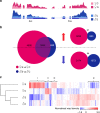

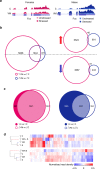
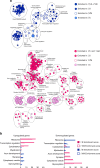
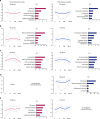
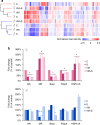
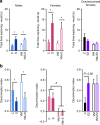
Similar articles
-
Translational profiling of stress-induced neuroplasticity in the CA3 pyramidal neurons of BDNF Val66Met mice.Mol Psychiatry. 2018 Apr;23(4):904-913. doi: 10.1038/mp.2016.219. Epub 2016 Dec 13. Mol Psychiatry. 2018. PMID: 27956743 Free PMC article.
-
Brain-Derived Neurotrophic Factor Val66Met Human Polymorphism Impairs the Beneficial Exercise-Induced Neurobiological Changes in Mice.Neuropsychopharmacology. 2016 Dec;41(13):3070-3079. doi: 10.1038/npp.2016.120. Epub 2016 Jul 8. Neuropsychopharmacology. 2016. PMID: 27388329 Free PMC article.
-
The impact of environmental enrichment on sex-specific neurochemical circuitries - effects on brain-derived neurotrophic factor and the serotonergic system.Neuroscience. 2012 Sep 18;220:267-76. doi: 10.1016/j.neuroscience.2012.06.016. Epub 2012 Jun 16. Neuroscience. 2012. PMID: 22710068
-
Variant BDNF-Val66Met Polymorphism is Associated with Layer-Specific Alterations in GABAergic Innervation of Pyramidal Neurons, Elevated Anxiety and Reduced Vulnerability of Adolescent Male Mice to Activity-Based Anorexia.Cereb Cortex. 2017 Aug 1;27(8):3980-3993. doi: 10.1093/cercor/bhw210. Cereb Cortex. 2017. PMID: 27578497 Free PMC article.
-
The Val66Met brain-derived neurotrophic factor gene variant interacts with early pain exposure to predict cortisol dysregulation in 7-year-old children born very preterm: Implications for cognition.Neuroscience. 2017 Feb 7;342:188-199. doi: 10.1016/j.neuroscience.2015.08.044. Epub 2015 Aug 28. Neuroscience. 2017. PMID: 26318333 Free PMC article. Review.
Cited by
-
Epigenetic mechanisms underlying sex differences in the brain and behavior.Trends Neurosci. 2024 Jan;47(1):18-35. doi: 10.1016/j.tins.2023.09.007. Epub 2023 Nov 15. Trends Neurosci. 2024. PMID: 37968206 Free PMC article. Review.
-
Cognitive dysfunction in mice lacking proper glucocorticoid receptor dimerization.PLoS One. 2019 Dec 23;14(12):e0226753. doi: 10.1371/journal.pone.0226753. eCollection 2019. PLoS One. 2019. PMID: 31869387 Free PMC article.
-
Behavioral phenotyping of a rat model of the BDNF Val66Met polymorphism reveals selective impairment of fear memory.Transl Psychiatry. 2022 Mar 7;12(1):93. doi: 10.1038/s41398-022-01858-5. Transl Psychiatry. 2022. PMID: 35256586 Free PMC article.
-
Mineralocorticoid receptor and glucocorticoid receptor work alone and together in cell-type-specific manner: Implications for resilience prediction and targeted therapy.Neurobiol Stress. 2022 Apr 22;18:100455. doi: 10.1016/j.ynstr.2022.100455. eCollection 2022 May. Neurobiol Stress. 2022. PMID: 35601687 Free PMC article.
-
Genomic modules and intramodular network concordance in susceptible and resilient male mice across models of stress.Neuropsychopharmacology. 2022 Apr;47(5):987-999. doi: 10.1038/s41386-021-01219-8. Epub 2021 Nov 30. Neuropsychopharmacology. 2022. PMID: 34848858 Free PMC article.
References
Publication types
MeSH terms
Substances
Grants and funding
LinkOut - more resources
Full Text Sources
Other Literature Sources
Molecular Biology Databases
Miscellaneous

